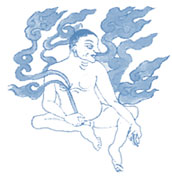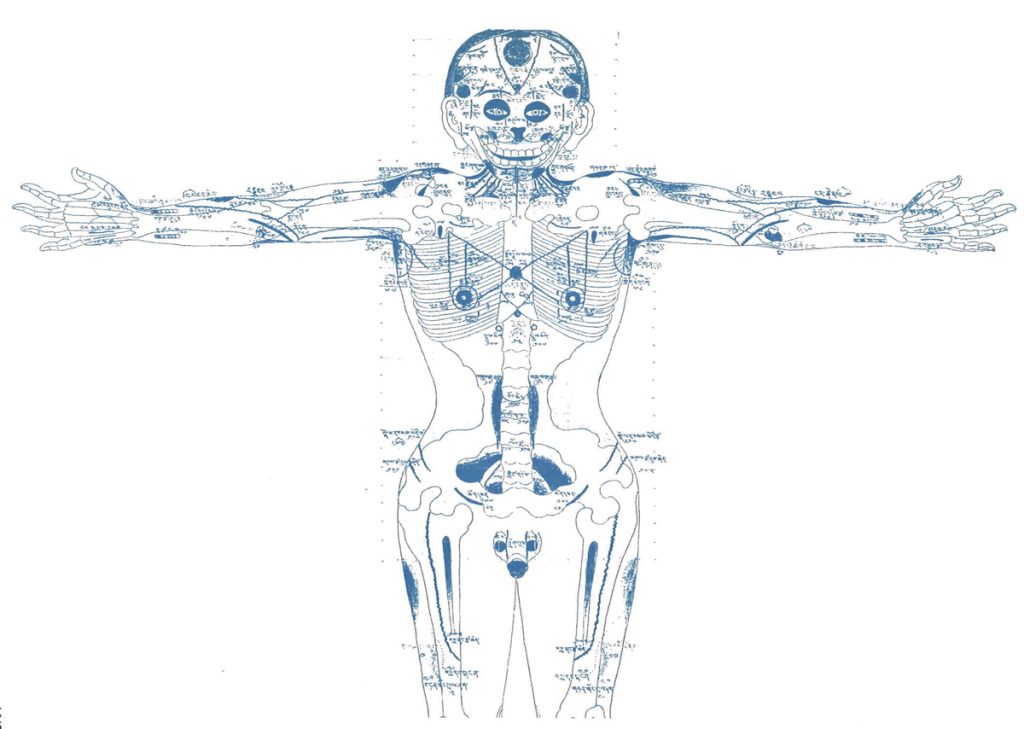This is a fact of life; we don’t like pain. We suffer because we marry our instinctive aversion to pain to the deep-seated belief that life should be free from pain. In resisting our pain by holding this belief, we strengthen just what we’re trying to avoid. When we make pain the enemy, we solidify it. This resistance is where our suffering begins.
Again, on experiencing pain, we almost always immediately resist. On top of the physical discomfort we quickly add a layer of negative judgments: “Why is this happening to me?” “I can’t bear this,” and so on. Regardless of whether we actually voice these judgments, we thoroughly believe them, which reinforces their devastating power. Rather than see them as a grafted-on filter, we accept them, unquestioned, as the truth. This blind belief in our thoughts further solidifies our physical experience of pain into the dense heaviness of suffering. And though we can intellectually accept the Buddha’s First Noble Truth that life entails suffering, when it happens to us, we rarely want anything to do with it.

How do we live the practice life when we’re in pain? To apply such phrases as “Be one with the pain” or “There is no self” (and therefore no one to suffer) is neither comforting nor helpful. We must first understand that both our pain and our suffering are truly our path, our teacher. While this understanding doesn’t necessarily entail liking our pain or our suffering, it does liberate us from regarding them as enemies we have to conquer. Once we have this understanding, which is a fundamental change in how we relate to life, we can begin to deal with the layers of pain and suffering that make up so much of our existence.
In early 1991 I had an acute and prolonged relapse of an immune system disease in which my muscles attack themselves. On the one hand, I had definite and objective physical symptoms with which to deal. On the other, I had layer upon layer of dark, emotion-based thoughts. These strongly believed thoughts not only exacerbated the physical symptoms but also had their own painful quality. My belief had been that I couldn’t practice because my life was so difficult. To accept these difficulties as my practice would mean I’d have to stop resisting and willingly let them in.
Related: Giving Pain the Slip
I began doing five different meditations a day and continued this for almost two years. Over time I learned to see the difference between the physical pain, the resistance to the pain, and the layers of emotion-based thoughts. I began to see the physical symptoms of discomfort as if they were in the center of a circle, with a concentric layer of resistance around it, and a concentric layer of emotions and thoughts around that. The very intensity of the emotional reaction “I can’t take this” is enough to tell us that we are caught in a belief system. Without awareness, these beliefs slip by so easily that we don’t even question their truth. With awareness, the thoughts can eventually be seen as thoughts and nothing more. In fact, we can begin to realize that they may not even be true! Thus the suffering is no longer fueled by our blind acceptance of our beliefs as the truth about reality.
Once I clarified these beliefs, it was easier to bring awareness to the resistance itself. Acknowledging the resistance as a physical, sensory experience is a big step. No longer seeing it as the enemy (“The Resistance”), we can begin the process of gradually softening into the sensations of resistance themselves. We bring awareness to wherever we experience tightness, pushing away, holding. We soften those energies with the light touch of awareness, opening the edges around the pain. No longer believing the thoughts, no longer fighting the resistance, left me with just the physical sensations. But now it was a physical experience without the suffering! I saw clearly how we hold our suffering in place with fear-based thoughts that arise in reaction to pain. These thoughts are further solidified by our resistance to letting the pain just be.
Related: Pain Without Suffering
As often as I was able, I would breathe into the heart-space on the in-breath and then send lovingkindness to my body, to my immune system, via the out-breath. With this sense of spaciousness and heart, I found I could enter directly into the sensations. In the moments when I could experience them not as “pain” but as intense physical energy, I was struck by a sense of quiet joy. Sometimes I felt a depth of appreciation that, by ordinary standards, would simply not compute. Opening to pain itself may still not be possible if the pain is intense, but in most cases pain is not as unbearable as we think it is.
Certainly, we can’t always transform pain from meaningless suffering into a sense of spaciousness, but at least we can practice seeing into the layers of beliefs and resistance that hold our suffering in place, thereby coming closer to gently opening to what is.
♦
Excerpted from Being Zen, © 2002 by Ezra Bayda. Reprinted by arrangement with Shambhala Publications, Inc.
Thank you for subscribing to Tricycle! As a nonprofit, we depend on readers like you to keep Buddhist teachings and practices widely available.
